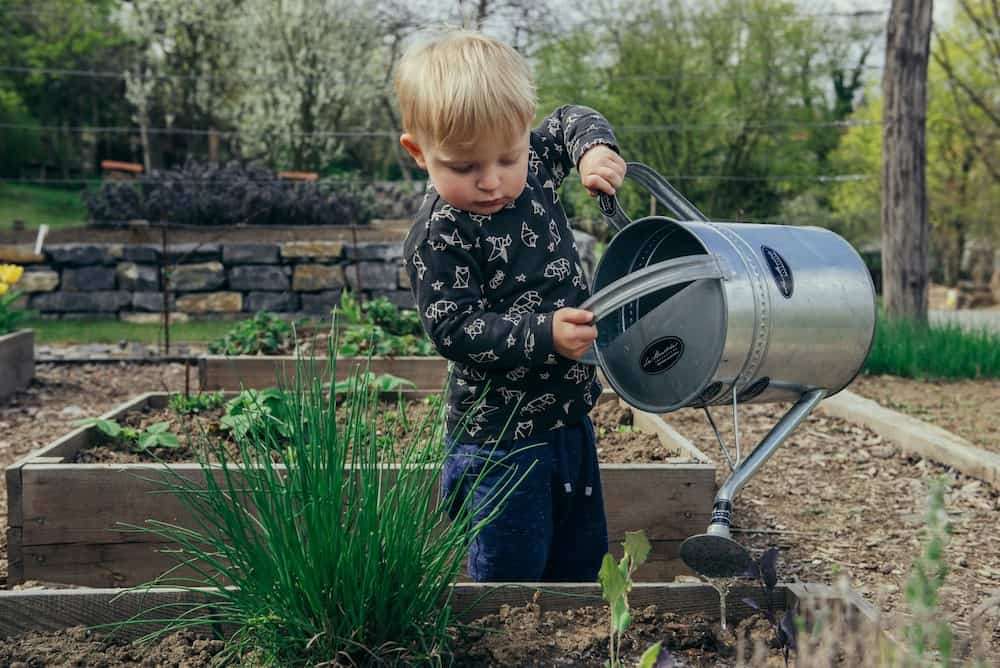In today’s digital age, it’s becoming increasingly important to reconnect children with nature and promote healthy lifestyles. One way to achieve this is by engaging them in hands-on activities such as gardening.
Gardening not only teaches kids about the environment, but it also instills important life skills, encourages healthy eating habits, and fosters a sense of responsibility. Let’s explore the basics of gardening for kids and provide practical tips on how to create a kid-friendly vegetable garden.

Understanding the Basics of Gardening
Gardening is a wonderful way to introduce kids to the wonders of nature. It allows them to witness the magic of seedlings sprouting, plants growing, and vegetables ripening. Additionally, it teaches them the importance of patience, perseverance, and care. By involving children in the gardening process, you are providing them with a valuable learning experience that extends beyond the boundaries of a traditional classroom.
The Importance of Gardening for Kids
Gardening has numerous benefits for children. It helps them develop a strong connection to nature, fostering a sense of appreciation and respect for the environment. Engaging in physical activity outdoors promotes overall health and well-being, as well as valuable life skills such as problem-solving, creativity, and responsibility. Gardening also encourages healthy eating habits by exposing children to a variety of fresh vegetables and fruits.
Essential Tools for Beginner Gardeners
Before embarking on your gardening journey, it’s important to equip yourself with the essential tools. These may include a small handheld trowel, a watering can, gardening gloves, and a set of child-sized gardening tools. These tools will make the gardening experience safe and enjoyable for children, allowing them to actively participate in the various gardening tasks.
Now, let’s dive deeper into the world of gardening tools. A small handheld trowel is a versatile tool that every young gardener should have. Its sharp edge allows for easy digging and planting, while its compact size makes it perfect for small hands. With a watering can in hand, children can take on the important responsibility of watering their plants. This not only teaches them about the importance of hydration for plants, but also instills a sense of pride and ownership in their gardening efforts.
Gardening gloves are another essential tool for beginner gardeners. Not only do they protect little hands from thorns and prickly plants, but they also provide a barrier against dirt and germs. Plus, wearing gloves can make the gardening experience even more exciting for kids, as they get to choose gloves in fun colors and patterns that reflect their unique personality.
Lastly, a set of child-sized gardening tools is a must-have for young green thumbs. These tools are specially designed to fit comfortably in small hands, making it easier for children to handle and manipulate them. From a mini rake to a pint-sized shovel, these tools allow kids to actively participate in tasks like raking leaves, turning soil, and planting seeds. By having their own set of tools, children feel a sense of ownership and empowerment, which further enhances their gardening experience.
Choosing the Right Vegetables for Your Garden
When it comes to creating a kid-friendly garden, selecting the right vegetables is key. You want varieties that are not only easy to grow but also appealing to children. After all, what better way to get kids excited about eating their veggies than by involving them in the process from seed to plate? Here are a few suggestions to get you started on your journey to cultivating a garden that will captivate your little ones.
Easy-to-Grow Vegetables for Kids
When it comes to choosing vegetables for your children’s garden, simplicity is key. Opt for crops that are not only low-maintenance but also quick to yield results. Cherry tomatoes are a fantastic choice, as their vibrant colors and sweet flavor make them irresistible to kids. Carrots, with their crunchy texture and vibrant orange hue, are another winner. Radishes, with their peppery bite and fast growth, are perfect for little green thumbs. And let’s not forget about lettuce, which can be harvested leaf by leaf, allowing children to enjoy the fruits of their labor in no time.
Seasonal Vegetables for Year-Round Gardening
While it’s important to choose vegetables that are easy to grow, it’s equally crucial to keep your garden interesting throughout the year. By incorporating seasonal vegetables into your planting plan, you can ensure a continuous cycle of excitement and discovery for your children. In the spring, consider planting peas, which can be trellised and provide a fun climbing experience for little ones. As the summer sun shines bright, let your garden flourish with the towering presence of corn, a crop that never fails to amaze young minds. As the leaves start to change color and a crispness fills the air, pumpkins can take center stage, offering the thrill of Halloween anticipation. And when winter arrives, embrace the hardiness of kale, a leafy green that can withstand the cold and provide a nutritious addition to your family’s meals.
By carefully selecting a variety of vegetables that are easy to grow and span different seasons, you can create a garden that will not only engage your children but also foster a love for nature and healthy eating. So, roll up your sleeves, grab your gardening tools, and embark on this green adventure with your little ones. The joy and satisfaction that come from watching a tiny seed transform into a bountiful harvest are truly priceless.
Preparing Your Garden
Before planting your vegetables, it’s essential to prepare your garden properly. This involves selecting the perfect spot for your garden and preparing the soil:
Selecting the Perfect Spot for Your Garden
Choose an area in your yard that receives ample sunlight. Most vegetable plants require at least six hours of direct sunlight per day. Avoid areas that are shaded by trees or buildings, as they can hinder plant growth. Encourage your children to observe the sun’s movement throughout the day to determine the most suitable location.
Additionally, consider the proximity of your garden to a water source. Vegetables need consistent watering, especially during dry spells. Having a water source nearby will make it easier for you to keep your plants hydrated and thriving. It’s also a great opportunity to teach your children about the importance of water conservation and responsible water usage.
Soil Preparation and Composting
Good soil preparation is crucial for a successful vegetable garden. Before planting, enrich the soil with organic matter such as compost or aged manure. This will provide essential nutrients and help retain moisture. Involve your children in the process of creating compost from kitchen scraps and other organic waste. This hands-on experience will help them understand the importance of recycling and natural fertilizers.
Furthermore, consider conducting a soil test to determine its pH level and nutrient content. This will allow you to make any necessary adjustments to ensure optimal growing conditions for your vegetables. You can find soil testing kits at your local garden center or contact your county extension office for assistance. Involving your children in this process will not only make it a fun and educational activity but also instill in them a sense of responsibility towards the environment and the importance of understanding the science behind gardening.
Planting and Caring for Your Vegetables
Now that your garden is ready, it’s time to start planting! Follow these step-by-step guidelines to ensure successful growth:
Step-by-Step Guide to Planting
1. Prepare the soil by loosening it with a garden fork or trowel.2. Create rows or raised beds, leaving enough space between plants for proper growth.3. Carefully plant the vegetable seedlings or seeds according to the instructions on the packet.4. Water thoroughly after planting and continue to water regularly, as needed.5. Mulch around the plants to retain moisture and prevent weed growth.6. As the plants grow, provide support, such as stakes or trellises, if necessary.
Watering, Weeding, and Pest Control
Teach your children the importance of proper watering techniques. Overwatering can cause root rot, while under-watering can stunt plant growth. Encourage them to regularly check the moisture levels by feeling the soil with their fingers. Additionally, involve them in the process of weeding, removing unwanted plant debris, and implementing organic pest control methods such as introducing beneficial insects or using natural repellents.
Harvesting and Using Your Vegetables
The joy of gardening culminates in the harvest of your homegrown vegetables. Here are some tips on when and how to harvest your produce:
When and How to Harvest Your Vegetables
Harvesting times vary depending on the type of vegetable. Teach your children to observe the signs of ripeness, such as color, size, and texture. For example, tomatoes should be plump, firm, and fully red, while lettuce leaves should be crisp and vibrant. Use scissors or gardening shears to harvest the vegetables, taking care not to damage the plant.
Fun and Healthy Recipes for Your Homegrown Veggies
Once you’ve harvested your delicious vegetables, get creative in the kitchen! Involve your children in selecting recipes and preparing meals using their homegrown produce. This hands-on experience will not only teach them the value of healthy eating, but it will also foster their culinary skills and creativity.
By creating a kid-friendly vegetable garden, you’re providing your children with an enriching and educational experience. From understanding the basics of gardening to choosing the right vegetables, preparing the soil, caring for plants, and harvesting the fruits of their labor, they will develop a newfound appreciation for nature and a sense of accomplishment. So roll up your sleeves, grab your gardening tools, and embark on this rewarding journey with your little green thumbs!



